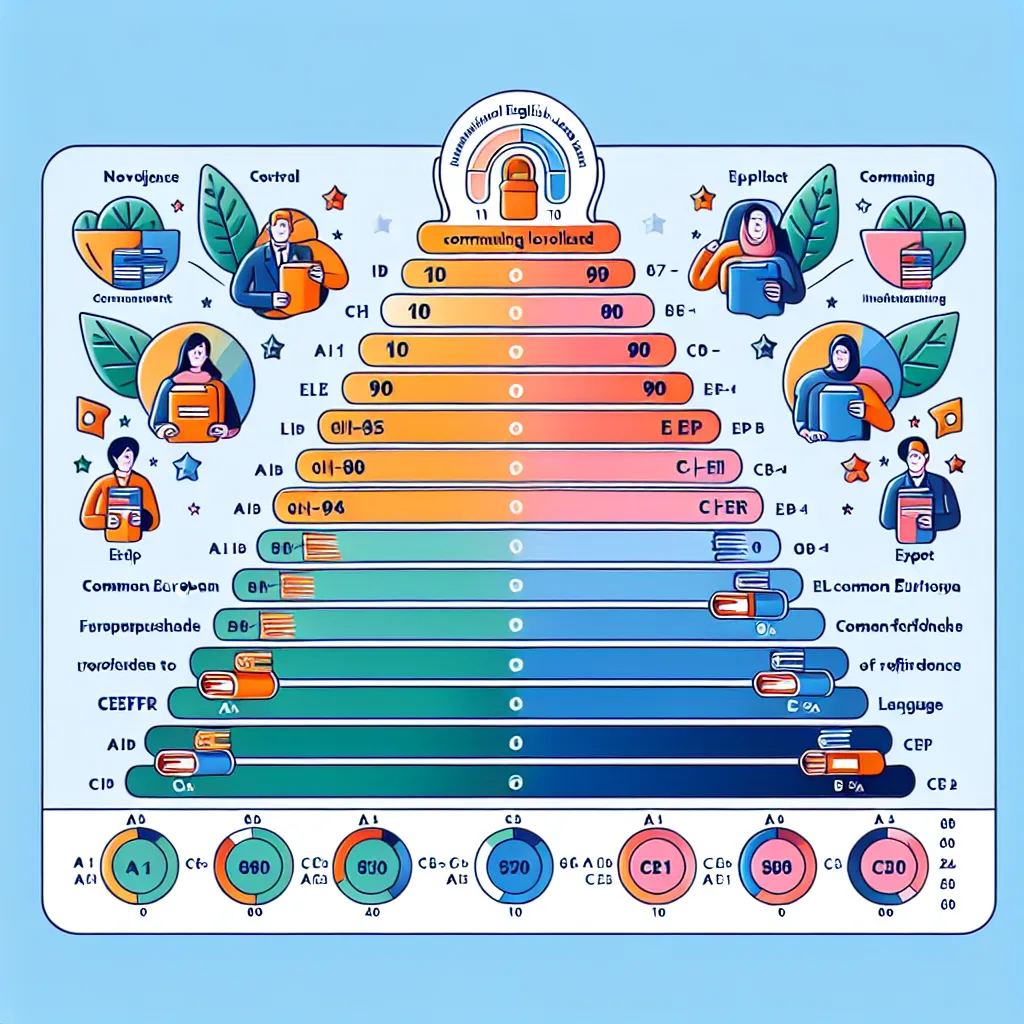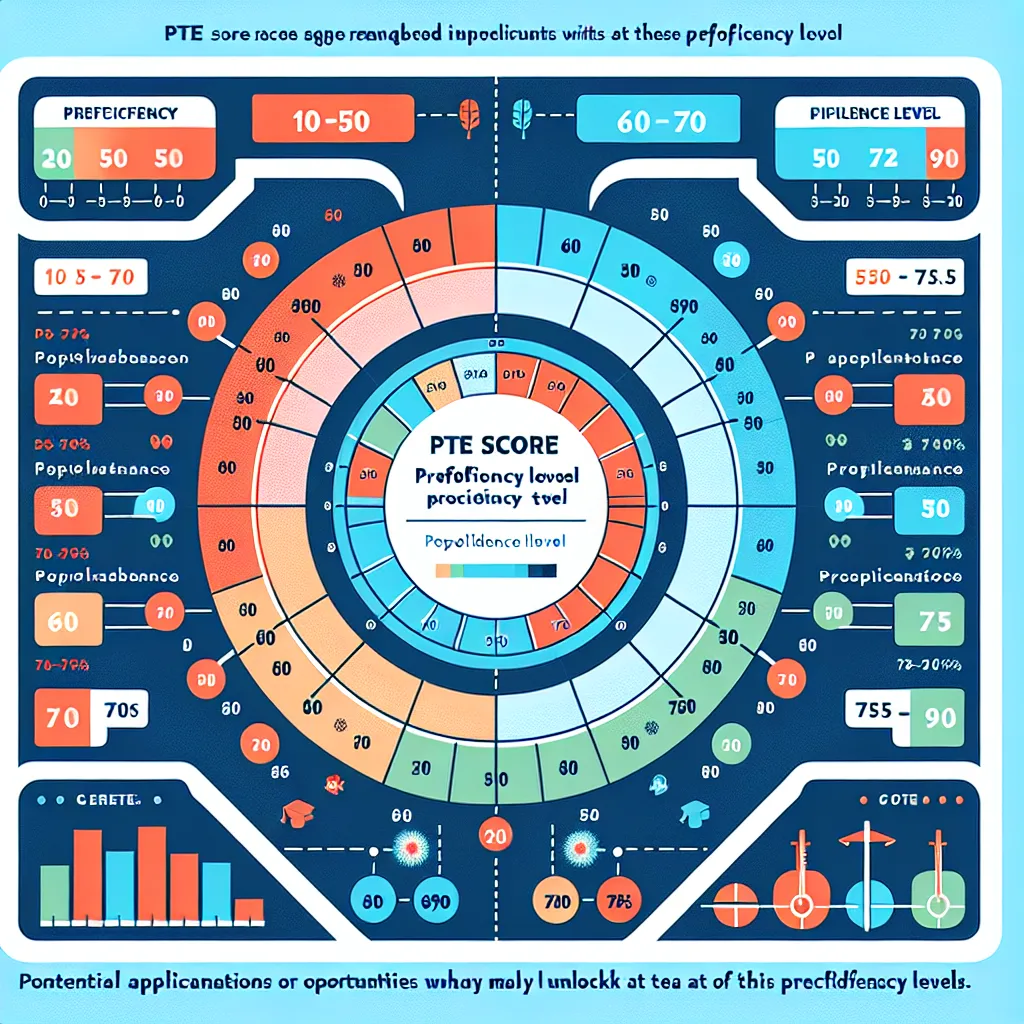Are you preparing for the Pearson Test of English (PTE) Academic and wondering about the average scores? Understanding PTE scoring can help you set realistic goals and gauge your performance. In this comprehensive guide, we’ll explore the average PTE scores, what they mean, and how you can aim for your target score.
Understanding PTE Scoring
Before diving into average scores, it’s crucial to understand how PTE Academic is scored. The test evaluates your English language skills across four main areas:
- Speaking and Writing
- Reading
- Listening
- Enabling Skills (Grammar, Oral Fluency, Pronunciation, Spelling, Vocabulary, Written Discourse)
Each of these areas is scored on a scale of 10-90 points, with an overall score also provided on the same scale.
 PTE Academic Scoring Scale
PTE Academic Scoring Scale
What is the Average PTE Score?
The average PTE score can vary depending on several factors, including the test-taker’s background, preparation level, and the specific time period. However, based on available data and expert analysis, we can provide some insights:
Overall Average Score
The overall average PTE score typically falls between 50-60 points. This range represents a mid-level of English proficiency, roughly equivalent to a B1-B2 level on the Common European Framework of Reference for Languages (CEFR).
Average Scores by Section
- Speaking and Writing: 50-55
- Reading: 55-60
- Listening: 55-60
- Enabling Skills: 50-60
It’s important to note that these are general averages, and individual scores can vary significantly.
Factors Influencing Average Scores
Several factors can impact the average PTE scores:
-
Test-taker Demographics: The average score can be influenced by the English proficiency levels of test-takers from different countries and educational backgrounds.
-
Purpose of Taking the Test: Those taking the test for higher education admissions might score differently from those taking it for immigration purposes.
-
Preparation Level: Well-prepared candidates generally score higher than those who are less prepared.
-
Test Updates: Pearson occasionally updates the test format, which can affect average scores temporarily.
How to Interpret Your PTE Score
Understanding your PTE score in relation to the average can help you assess your performance:
Below Average (10-50)
If your score falls in this range, you may need additional preparation to improve your English skills.
Average (50-60)
This range indicates a moderate level of English proficiency. It may be sufficient for some purposes but might not meet the requirements for competitive university programs or certain immigration criteria.
Above Average (60-75)
Scores in this range demonstrate a good command of English and are often sufficient for many university programs and immigration requirements.
Excellent (75-90)
These scores indicate a very high level of English proficiency and are typically more than sufficient for most academic and professional purposes.
 PTE Score Interpretation Chart
PTE Score Interpretation Chart
Aiming for Above-Average Scores
If you’re looking to score above average on the PTE exam, consider the following strategies:
-
Familiarize Yourself with the Test Format: Understanding the structure and types of questions in each section can significantly improve your performance.
-
Practice Regularly: Use official PTE practice materials and mock tests to hone your skills.
-
Focus on Weak Areas: Identify your weaknesses and allocate more time to improving those specific skills.
-
Improve Your English Overall: Engage in English-language media, practice speaking with native speakers, and read widely in English.
-
Time Management: Practice completing tasks within the allocated time to improve your efficiency during the actual test.
Comparing PTE Scores with Other English Tests
To put PTE scores in perspective, here’s how they roughly compare to other popular English proficiency tests:
- PTE 30-42 ≈ IELTS 4.5-5.5 ≈ TOEFL iBT 42-52
- PTE 43-58 ≈ IELTS 6.0-6.5 ≈ TOEFL iBT 53-78
- PTE 59-75 ≈ IELTS 7.0-7.5 ≈ TOEFL iBT 79-95
- PTE 76-84 ≈ IELTS 8.0-8.5 ≈ TOEFL iBT 96-111
- PTE 85-90 ≈ IELTS 9.0 ≈ TOEFL iBT 112-120
Remember, these are approximate equivalences, and actual score requirements may vary depending on the institution or organization.
Conclusion
Understanding the average PTE score provides a valuable benchmark for your preparation. While the overall average typically falls between 50-60, your target score should align with your specific goals, whether for academic admission, professional certification, or immigration purposes. By focusing on consistent practice, addressing your weaknesses, and familiarizing yourself with the test format, you can aim to score above average and achieve your desired outcome.
Remember, the PTE exam is designed to assess your real-world English skills, so the best preparation involves not just test practice, but also improving your overall English proficiency. Keep practicing, stay motivated, and approach the test with confidence!
[internal_links]
- How to Prepare for PTE Speaking Section
- Top PTE Reading Strategies for Success
- Mastering PTE Listening: Tips and Tricks
- PTE Writing: A Comprehensive Guide
- Common PTE Mistakes and How to Avoid Them
[/internal_links]




